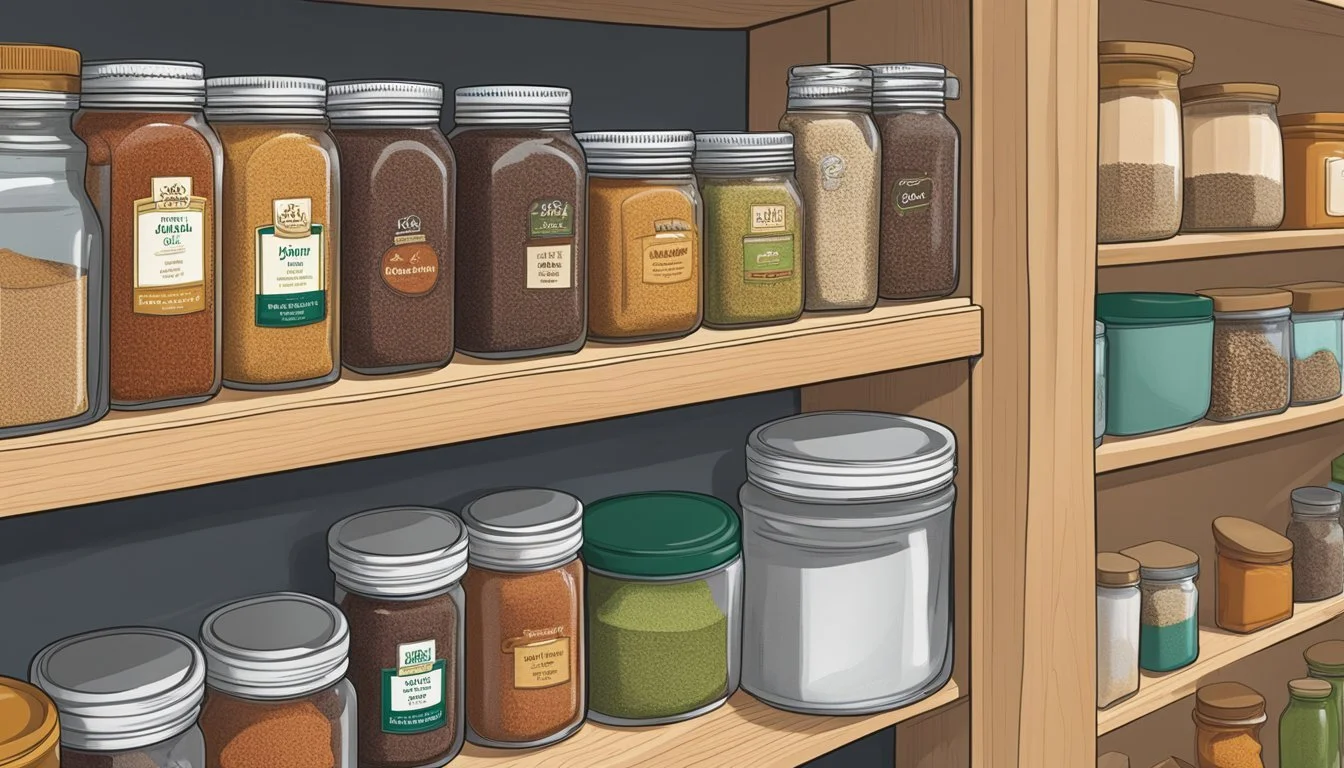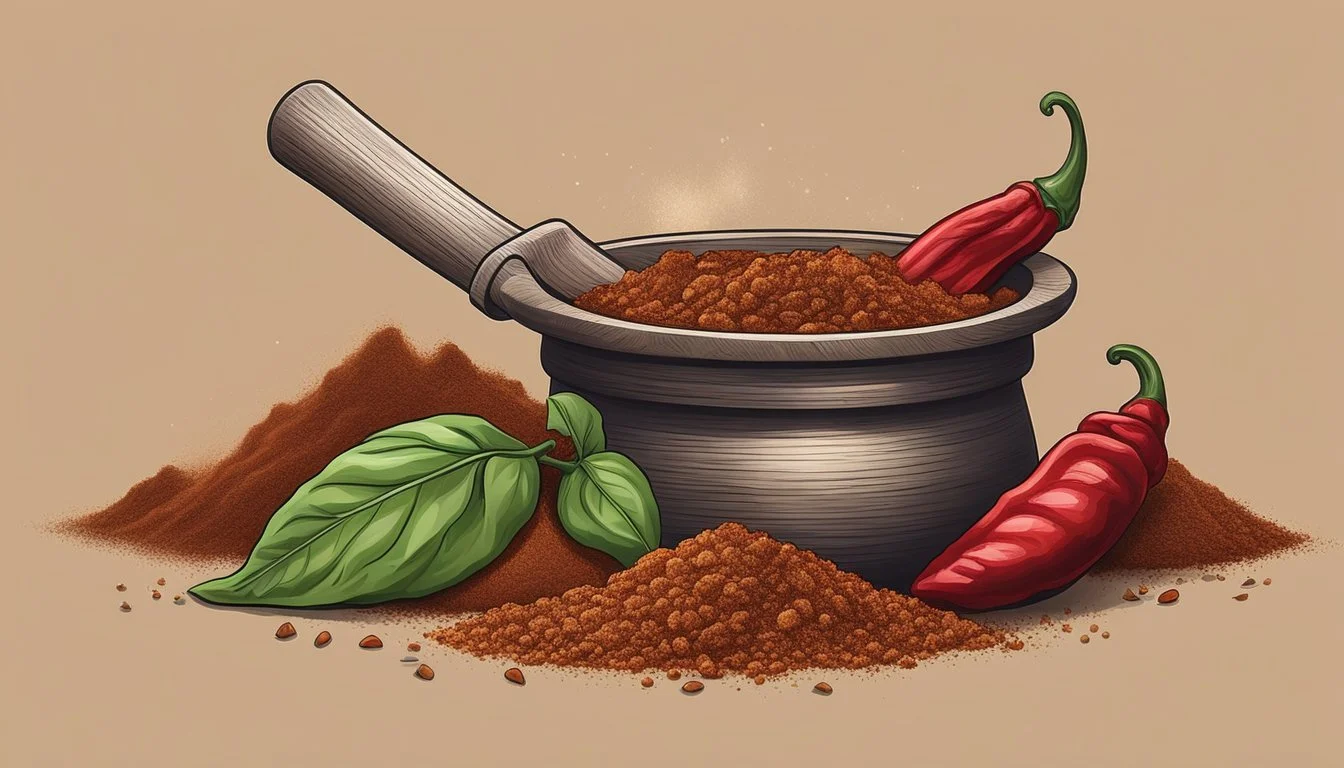Does Guajillo Chili Powder Go Bad?
Shelf Life and Storage Tips
Guajillo chili powder, a staple in many Mexican dishes, adds a fruity and subtly spicy kick to various recipes. It brings not only heat but also a depth of flavor that can transform the simplest dish into a culinary delight. The key to maintaining its impact lies in proper storage.
Guajillo chili powder does go bad, as its potency and flavor degrade over time. Even when kept away from light and moisture, the powder's vibrant taste slowly diminishes. Storing it in an airtight container in a cool, dark place can prolong its shelf life and retain its characteristic flavor for a longer period.
For cooks and food enthusiasts, understanding the shelf life of guajillo chili powder is essential. Being mindful of its storage conditions helps ensure that every use delivers the robust, intricate flavors typical of Mexican cuisine.
Understanding Guajillo Chili Powder
Guajillo chili powder is made from dried guajillo chilies, which are the dried form of mirasol peppers. These chilies are primarily grown in Mexico and are a staple in Mexican cuisine.
The flavor profile of guajillo chili is unique. It combines a mild heat with distinct smoky and fruity notes. The heat level of guajillo chilies ranges from 2,500 to 5,000 on the Scoville scale, which is similar to that of jalapeños.
This chili powder is a versatile spice often used in sauces, salsas, and marinades. It pairs well with other Mexican chilies such as ancho, chipotle, and pasilla peppers to create depth in various dishes.
In cooking, guajillo chili powder can add a rich, aromatic component to recipes. Its complexity makes it suitable for meat rubs, stews, and soups. For best results, store it in a cool, dry place away from direct heat and sunlight to maintain its flavor and potency.
Shelf Life and Spoilage
Guajillo chili powder has a notable shelf life if stored correctly, though various factors can affect its potency and overall quality. Recognizing signs of spoilage and understanding the best storage practices are crucial for maintaining its freshness.
Determining Shelf Life
Guajillo chili powder, when properly stored, can generally last between 2 to 4 years. To maximize its shelf life, it is essential to keep the spice in an airtight container and store it in a cool, dark place.
Unlike whole dried guajillo chilies, which may last for 1 to 2 years, the ground powder form loses its freshness more quickly due to increased exposure to air and light. Checking the expiration date on the packaging can provide a good estimate, though the product may remain usable past this date if no spoilage signs are evident.
Signs of Spoilage
Certain signs can indicate that guajillo chili powder has gone bad. Changes in color are a primary indicator; the powder may look faded or dull, showing it has lost its potency. An off or rancid aroma suggests that the essential oils within the chili have degraded.
Physical signs such as clumping or the presence of mold growth are unmistakable indicators of spoilage. If any mold is visible, it is best to discard the entire contents of the container. Additionally, a significant reduction in flavor and heat can also denote that the powder is well past its prime.
Factors Affecting Freshness
Various factors influence the freshness and longevity of guajillo chili powder. Exposure to moisture can lead to clumping and mold, severely impacting the quality. Air and light are also detrimental, causing the powder to degrade faster and lose its vibrant color.
To combat these elements, it is advisable to use airtight packaging and store the spice away from direct sunlight. Keeping the powder in a pantry or cupboard where temperatures are stable and low will help maintain its potency for as long as possible. Proper storage practices are key to preserving the spice's quality and extending its shelf life.
Optimal Storage Solutions
Proper storage of guajillo chili powder is crucial to maintain its flavor and potency. Key factors include protecting it from moisture, heat, and light.
Best Practices for Storage
Guajillo chili powder should be kept in an airtight container to prevent moisture and air from degrading its quality. A sealed glass jar or plastic container works well.
Store the container in a cool, dry place such as a pantry or cabinet. Avoid locations near a stove or where the product is exposed to direct sunlight. Label the container with the purchase date to monitor freshness.
Monitor the container periodically for signs of spoilage like clumping or a loss of aroma. Using a clean spoon to scoop out the powder will help prevent contaminants.
Refrigeration and Freezing
For longer preservation, place the guajillo chili powder in the refrigerator or freezer. This method is especially useful in hot, humid climates.
Use airtight containers designed for low temperatures to maintain the quality of the chili powder. Clearly label each container with the date of storage.
When removing the powder from refrigeration, allow the container to reach room temperature before opening to prevent condensation inside the container. This step minimizes moisture exposure and helps maintain the powder’s quality.
Extending Shelf Life
To extend the shelf life, always store guajillo chili powder in a dark place where it is safe from light. Light can quickly degrade the color and flavor.
Use smaller containers to portion out amounts for regular use, reducing the number of times each container is opened. This practice lessens the product’s exposure to air and moisture.
Consider vacuum sealing for an extra layer of protection, especially if you have a large quantity. Regularly inspect for signs of staleness or spoilage to ensure the powder remains effective.
Using Guajillo Chili in Cooking
Guajillo chili is a versatile ingredient in Mexican cooking. Its mild heat and slightly fruity flavor make it a popular choice for various dishes. It is often used in enchiladas, mole, and salsas.
In soups and stews, guajillo chili adds depth to the broth. For marinades, it can be blended into a paste for meat preparations. It is also perfect for rubs on grilled meats.
Tex-Mex dishes like tacos and fajitas benefit from guajillo’s unique profile. The chili is also integral in creating robust Mexican sauces. In addition, homemade desserts sometimes incorporate guajillo chili for a hint of spice.
Steps for Cooking with Guajillo Chili:
Deseed and remove stems.
Toast the chilis lightly to enhance flavor.
Blend into sauces, soups, or marinades.
Rehydrate if needed before blending.
A simple guajillo sauce enhances many culinary creations. Combining these chilis with other ingredients can yield rich and flavorful dishes suitable for any meal.
When to Replace Guajillo Chili Powder
Guajillo chili powder can lose its potency over time. Always check the expiration date on the label. This helps ensure you're using it within its optimal period.
Aroma and flavor are good indicators of freshness. If the powder has a faded aroma or flat flavor, it may be time to replace it. Fresh guajillo powder should have a strong, sweet, and slightly smoky scent.
Inspect the color of the powder. Fresh guajillo chili powder typically has a vibrant red color. If it appears dull or brownish, this can indicate loss of potency.
Store the powder properly to maintain its freshness. Keep it in an airtight container, away from light and heat.
When cooking, if your dishes lack the desired spice or depth you expect from guajillo powder, it’s an indication that the powder might need replacing.
Remember, spices that have been stored for more than a year are likely past their prime. For the best cooking results, more frequent replacements ensure your dishes have their intended flavor profile.
Making Homemade Chili Powder
Making homemade chili powder involves the careful selection of quality ingredients, proper grinding techniques, and effective storage methods to maintain freshness and flavor.
Selecting Ingredients
For the best homemade chili powder, start with high-quality, dried guajillo chilies. These peppers are known for their mild heat and rich, complex flavor. Remove the stems and seeds before toasting. Other possible ingredients include cumin seeds, dried garlic, and oregano to enhance depth.
It's crucial to choose fresh, vibrant dried chiles. They should be pliable and slightly glossy, not brittle or faded. Quality ingredients result in a robust and flavorful chili powder that stands out.
The Grinding Process
After selecting your ingredients, toast the dried guajillo chilies in a dry skillet over medium heat for a few minutes until fragrant. Be careful to avoid burning them. Once toasted, let them cool completely.
Use a blender, food processor, or spice grinder to grind the toasted chilies and any additional ingredients like toasted cumin seeds and dried garlic. A fine grind yields a uniform powder, but texture preference can vary. Pulse until the mixture reaches the desired consistency.
Storage and Usage
Proper storage is key to maintaining the freshness of homemade chili powder. Transfer the ground mixture to an airtight container to protect it from moisture and air exposure. Store in a cool, dark place, such as a pantry or cupboard, away from the stove's heat.
Using airtight containers prolongs the shelf life, allowing the chili powder to retain its potency for several weeks. Incorporate the chili powder into recipes for authentic flavor, adjusting quantities to match desired heat and taste. Properly stored, this homemade spice blend can enhance various dishes, from soups to marinades.
Guajillo Chili in Cultural Cuisine
Guajillo chili is a staple in Mexican cuisine. Its unique fruity flavor and mild heat make it an essential ingredient for various traditional dishes.
In guajillo salsa, this chili provides a depth of flavor that pairs well with meats, vegetables, and even eggs. The salsa can be used as a topping, a dip, or an integral part of many recipes.
In Tex-Mex dishes, guajillo chili powder adds a subtle heat to enchiladas, tacos, and burritos. It's often combined with other spices to create complex and rich sauces.
Common Uses
Salsas: Enhances the texture and flavor.
Marinades: Adds complexity to meat dishes.
Stews and Soups: Guajillo chilies contribute to a well-rounded taste.
Its versatile nature ensures that guajillo chili remains a favorite across various culinary traditions.
Purchasing and Identifying Quality Powder
When buying guajillo chili powder, it's essential to look for key indicators of freshness and authenticity. Pay attention to color, origin, and packaging to ensure you're getting a high-quality product that will enhance your culinary creations.
Finding Authentic Guajillo Powder
Finding guajillo chili powder in grocery stores requires knowing what to look for. Quality guajillo powder has a vibrant red color, indicating freshness and proper drying. Dull or brownish hues suggest age or poor processing.
Origin is also crucial. Authentic guajillo powder typically comes from regions in Mexico where guajillo chilies are traditionally grown. Checking labels for the country of origin can help confirm authenticity.
Some brands may offer organic options. These often ensure higher quality through stringent growing and processing standards. Look for certifications on the packaging.
Reading Labels for Freshness
Reading labels carefully is vital. Check for the packaging date and expiration date. Freshly packaged guajillo powder should have been packed within the last six months to guarantee optimal flavor and potency.
Avoid powders in transparent bags. Light can degrade the quality, so opt for those in opaque or dark-colored containers. Packaging should be airtight to prevent moisture exposure, which can lead to clumping and loss of flavor.
Beware of artificial additives. Quality guajillo powder should contain only ground guajillo chilies, without added salts, preservatives, or artificial colors. Minimal ingredient lists signify a purer product.
Inspecting labels and understanding what they convey ensures you purchase a product that maintains its vibrant flavor and essential qualities.










